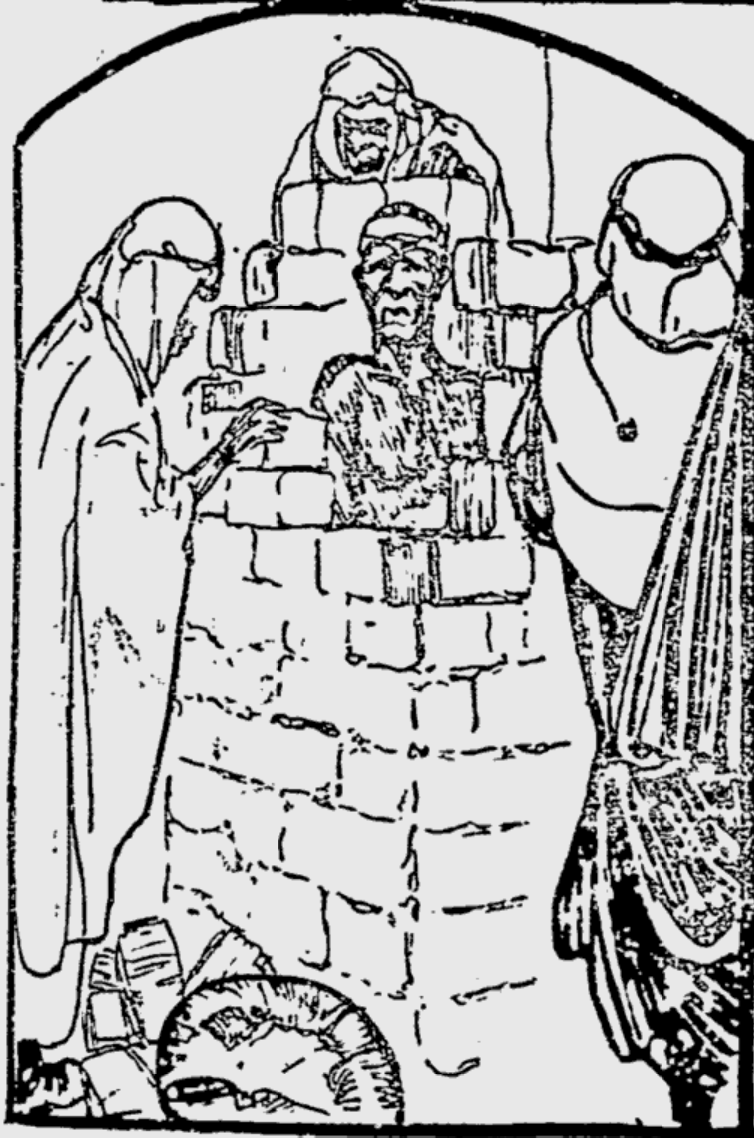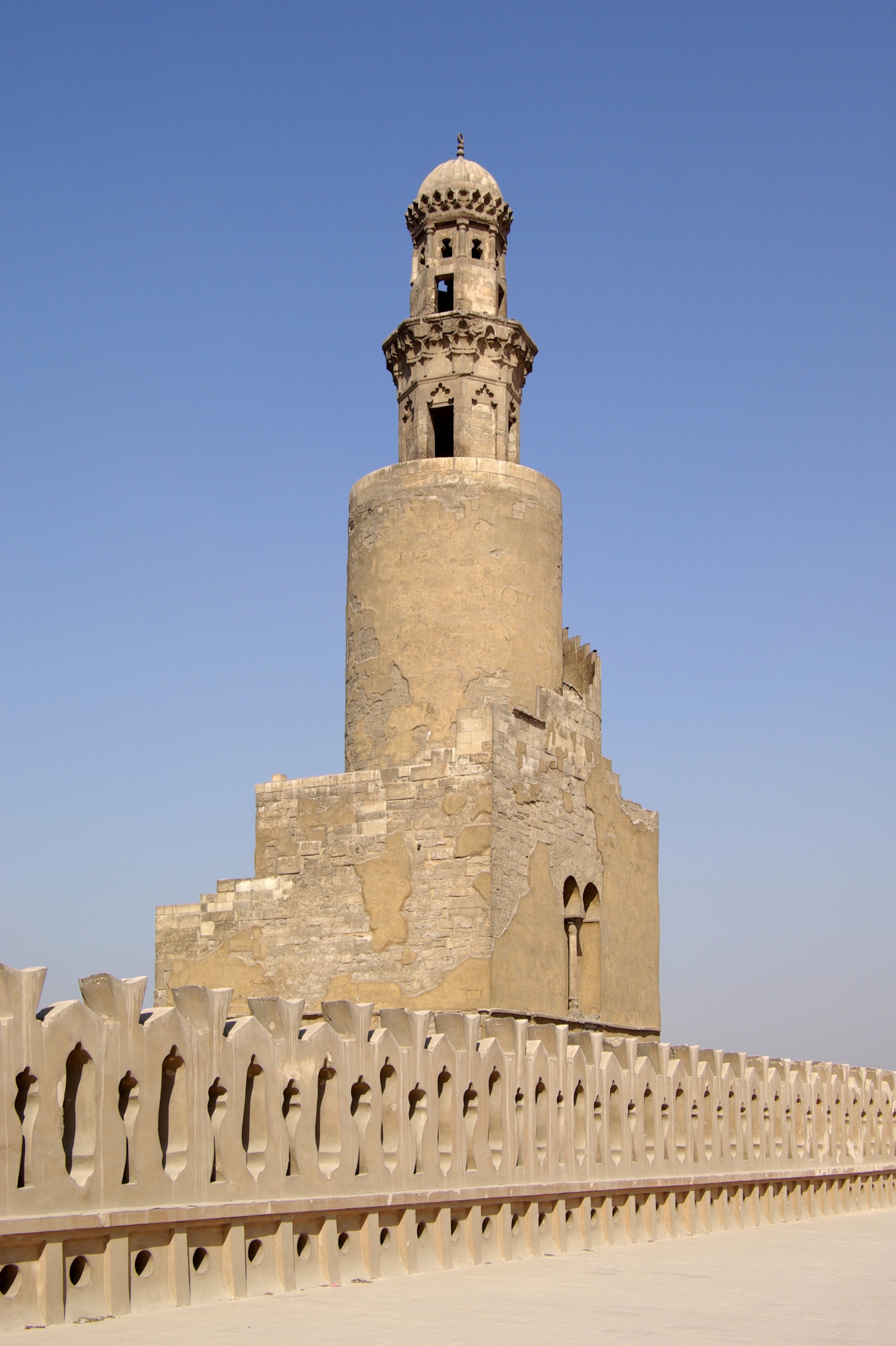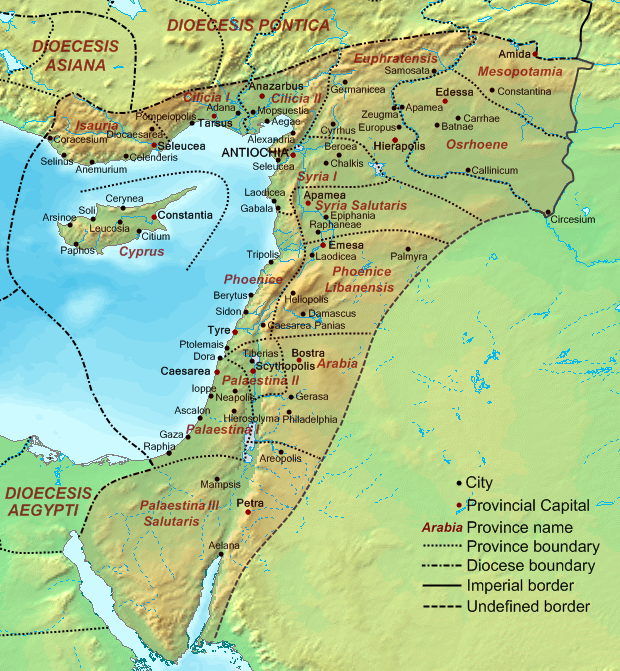|
Nizar Ibn Al-Mustansir
Abu Mansur Nizar ibn al-Mustansir (; 1045–1095) was a Fatimid dynasty, Fatimid prince, and the oldest son of the eighth Fatimid Caliphate, Fatimid caliph and eighteenth Isma'ilism, Isma'ili Imamate in Ismaili doctrine, imam, al-Mustansir Billah, al-Mustansir. When his father died in December 1094, the powerful vizier (Fatimid Caliphate), vizier, al-Afdal Shahanshah, raised Nizar's younger brother al-Musta'li to the throne in Cairo, bypassing the claims of Nizar and other older sons of al-Mustansir. Nizar escaped Cairo, rebelled and seized Alexandria, where he reigned as caliph with the laqab, regnal name al-Mustafa li-Din Allah (). In late 1095 he was defeated and taken prisoner to Cairo, where he was executed by immurement. During the 12th century, some of Nizar's actual or claimed descendants tried, without success, to seize the throne from the Fatimid caliphs. Many Isma'ilis, especially in Seljuk Empire, Persia, rejected al-Musta'li's imamate and considered Nizar as the r ... [...More Info...] [...Related Items...] OR: [Wikipedia] [Google] [Baidu] |
Imamate In Nizari Doctrine
In Nizari Isma'ilism, Nizari Isma'ili doctrine, Imamate in Shia doctrine, imamate () is a concept which defines the political, religious and spiritual dimensions of authority concerning Islamic leadership over the Ummah, nation of believers. The primary function of the Imamate is to establish an institution between an Imam who is present and living in the world and his following whereby each are granted rights and responsibilities.Interview on BBC Radio 4 - 1979, September 6, http://www.ismaili.net/heritage/node/17808 The Nizari Imamate follows a genealogy of male Imams originating from the Prophets and messengers in Islam, prophethood of Muhammad by means of wedlock of his daughter Fatimah with his cousin Ali and in succession, through their son Husayn ibn Ali, Hussein and his onward descendants up to the present day. Each ordained as successor Imam of this lineage is charged with serving the Nizari Ismailis community of his era; who are liable to pay the zakat (tithe) dues to hi ... [...More Info...] [...Related Items...] OR: [Wikipedia] [Google] [Baidu] |
Immurement
Immurement (; ), also called immuration or live entombment, is a form of imprisonment, usually until death, in which someone is placed within an enclosed space without exits. This includes instances where people have been enclosed in extremely tight confinement, such as within a coffin. When used as a means of execution, the prisoner is simply left to die from starvation or dehydration. This form of execution is distinct from being buried alive, in which the victim typically dies of asphyxiation. By contrast, immurement has also occasionally been used as an early form of life imprisonment, in which cases the victims were regularly fed and given water. There have been a few cases in which people have survived for months or years after being walled up, as well as some people, such as anchorites, who were voluntarily immured. Notable examples of immurement as an established execution practice (with death from thirst or starvation as the intended aim) are attested. In the Roman Empir ... [...More Info...] [...Related Items...] OR: [Wikipedia] [Google] [Baidu] |
Mamluk Sultanate (Cairo)
The Mamluk Sultanate (), also known as Mamluk Egypt or the Mamluk Empire, was a state that ruled medieval Egypt, Egypt, the Levant and the Hejaz from the mid-13th to early 16th centuries, with Cairo as its capital. It was ruled by a military caste of mamluks (freed slave soldiers) headed by a sultan. The sultanate was established with the overthrow of the Ayyubid dynasty in Egypt in 1250 and was Ottoman–Mamluk War (1516–1517), conquered by the Ottoman Empire in 1517. Mamluk history is generally divided into the Turkic peoples, Turkic or Bahri Mamluks, Bahri period (1250–1382) and the Circassians, Circassian or Burji Mamluks, Burji period (1382–1517), called after the predominant ethnicity or corps of the ruling Mamluks during these respective eras. The first rulers of the sultanate hailed from the mamluk regiments of the Ayyubid sultan as-Salih Ayyub (), usurping power from his successor in 1250. The Mamluks under Sultan Qutuz and Baybars Battle of Ain Jalut, routed the ... [...More Info...] [...Related Items...] OR: [Wikipedia] [Google] [Baidu] |
Egypt In The Middle Ages
Following the Muslim conquest of Egypt, Islamic conquest in 641-642, Lower Egypt was ruled at first by governors acting in the name of the Rashidun Caliphs and then the Umayyad Caliphs in Damascus, but in 750 the Umayyads Abbasid Revolution, were overthrown. Throughout Islamic rule, Al-Askar, Askar was named the capital and housed the ruling administration. The conquest led to two separate provinces all under one ruler: Upper Egypt, Upper and Lower Egypt. These two very distinct regions were governed by the military and followed the demands handed down by the governor of Egypt and imposed by the heads of their communities. Egypt was ruled by many dynasties from the start of Islamic control in 639 until the early 16th century. The Umayyad period lasted from 658 to 750. The Abbasid period which came after was much more focused on taxes and centralizing power. In 868, the Tulunids, ruled by Ahmad ibn Tulun, expanded Egypt's territory into the Levant. He would rule until his death in ... [...More Info...] [...Related Items...] OR: [Wikipedia] [Google] [Baidu] |
Black African
Black is a racial classification of people, usually a Politics, political and Human skin color, skin color-based category for specific populations with a mid- to dark brown complexion. Not all people considered "black" have dark skin and often additional Phenotype, phenotypical characteristics are relevant, such as facial and hair-texture features; in certain countries, often in socially based systems of racial classification in the Western world, the term "black" is used to describe persons who are perceived as dark-skinned compared to other populations. It is most commonly used for people of sub-Saharan African ancestry, Indigenous Australians and Melanesians, though it has been applied in many contexts to other groups, and is no indicator of any close ancestral relationship whatsoever. Indigenous African societies do not use the term ''black'' as a racial identity outside of influences brought by Western cultures. Contemporary anthropologists and other scientists, while rec ... [...More Info...] [...Related Items...] OR: [Wikipedia] [Google] [Baidu] |
Fatimid Army
The Fatimid army was the land force of the Fatimid Caliphate (909–1171). Like the other armies of the medieval Islamic world, it was a multi-ethnic army, drawn from marginal and even foreign peoples, rather than the Arab mainstream of Fatimid society. The core of the Fatimid army emerged from the Berber Kutama tribe, who had accepted the Isma'ili propaganda of Abu Abdallah al-Shi'i and overthrown the Aghlabids of Ifriqiya between 902 and 909. Very quickly the Kutama were supplemented with other ethnic contingents, such as the (Byzantine Greeks) and the (Black Africans), inherited from the Aghlabid military, but the Berbers remained the mainstay of Fatimid armies until the 970s, when the Fatimid conquest of Egypt and their subsequent expansion into Syria brought them into conflict with the Turkic cavalry of the eastern Islamic world. The Fatimids began to incorporate Turks and Daylamites in large numbers into their army, which led to—often bloody—rivalry with the Kutama. The ... [...More Info...] [...Related Items...] OR: [Wikipedia] [Google] [Baidu] |
Bilad Al-Sham
Bilad al-Sham (), often referred to as Islamic Syria or simply Syria in English-language sources, was a province of the Rashidun, Umayyad, Abbasid, and Fatimid caliphates. It roughly corresponded with the Byzantine Diocese of the East, conquered by the Muslims in 634–647. Under the Umayyads (661–750), Bilad al-Sham was the metropolitan province of the Caliphate and different localities throughout the province served as the seats of the Umayyad caliphs and princes. Bilad al-Sham was first organized into the four '' ajnad'' (military districts; singular ''jund'') of Dimashq (Damascus), Hims (Homs), al-Urdunn (Jordan), and Filastin (Palestine), between 637 and 640 by Caliph Umar following the Muslim conquest. The ''jund'' of Qinnasrin was created out of the northern part of Hims by caliphs Mu'awiya I () or Yazid I (). The Jazira (Upper Mesopotamia) was made an independent province from the Mesopotamian part of Qinnasrin by Caliph Abd al-Malik in 692. In 786, the ''j ... [...More Info...] [...Related Items...] OR: [Wikipedia] [Google] [Baidu] |
Seljuk Turks
The Seljuk dynasty, or Seljukids ( ; , ''Saljuqian'',) alternatively spelled as Saljuqids or Seljuk Turks, was an Oghuz Turks, Oghuz Turkic, Sunni Muslim dynasty that gradually became Persianate society, Persianate and contributed to Turco-Persian tradition, Turco-Persian culture. The founder of the Seljuk dynasty, Seljuk Beg, was a descendant of a royal Khazar chief Tuqaq who served as advisor to the King of the Khazars. in West Asia and Central Asia. The Seljuks established the Seljuk Empire (1037–1194), the Kerman Seljuk Sultanate, Sultanate of Kermân (1041–1186) and the Sultanate of Rum (1074–1308), which stretched from Iran to Anatolia and were the prime targets of the First Crusade. Early history The Seljuks originated from the Kınık (tribe), Kinik branch of the Oghuz Turks, who in the 8th century lived on the periphery of the Muslim world; north of the Caspian Sea and Aral Sea in their Oghuz Yabgu State in the Kazakh Steppe of Turkestan. During the 10th century, ... [...More Info...] [...Related Items...] OR: [Wikipedia] [Google] [Baidu] |
Paul E
Paul may refer to: People * Paul (given name), a given name, including a list of people * Paul (surname), a list of people * Paul the Apostle, an apostle who wrote many of the books of the New Testament * Ray Hildebrand, half of the singing duo Paul & Paula * Paul Stookey, one-third of the folk music trio Peter, Paul and Mary * Billy Paul, stage name of American soul singer Paul Williams (1934–2016) * Vinnie Paul, drummer for American Metal band Pantera * Paul Avril, pseudonym of Édouard-Henri Avril (1849–1928), French painter and commercial artist * Paul, pen name under which Walter Scott wrote ''Paul's letters to his Kinsfolk'' in 1816 * Jean Paul, pen name of Johann Paul Friedrich Richter (1763–1825), German Romantic writer Places * Paul, Cornwall, a village in the civil parish of Penzance, United Kingdom *Paul (civil parish), Cornwall, United Kingdom * Paul, Alabama, United States, an unincorporated community *Paul, Idaho, United States, a city *Paul, Nebraska, Unit ... [...More Info...] [...Related Items...] OR: [Wikipedia] [Google] [Baidu] |
Caliph
A caliphate ( ) is an institution or public office under the leadership of an Islamic steward with Khalifa, the title of caliph (; , ), a person considered a political–religious successor to the Islamic prophet Muhammad and a leader of the entire Muslim world (''ummah''). Historically, the caliphates were polities based on Islam which developed into multi-ethnic trans-national empires. During the medieval period, three major caliphates succeeded each other: the Rashidun Caliphate (632–661), the Umayyad Caliphate (661–750), and the Abbasid Caliphate (750–1517). In the fourth major caliphate, the Ottoman Caliphate, the rulers of the Ottoman Empire claimed caliphal authority from 1517 until the Ottoman caliphate was Abolition of the Caliphate, formally abolished as part of the Atatürk's reforms, 1924 secularisation of Turkey. An attempt to preserve the title was tried, with the Sharifian Caliphate, but this caliphate fell quickly after its conquest by the Sultanate o ... [...More Info...] [...Related Items...] OR: [Wikipedia] [Google] [Baidu] |
Fatimid
The Fatimid Caliphate (; ), also known as the Fatimid Empire, was a caliphate extant from the tenth to the twelfth centuries CE under the rule of the Fatimid dynasty, Fatimids, an Isma'ili Shi'a dynasty. Spanning a large area of North Africa and West Asia, it ranged from the western Mediterranean Sea, Mediterranean in the west to the Red Sea in the east. The Fatimids traced their ancestry to the Islamic prophet Muhammad's daughter Fatima and her husband Ali, the first Shia, Shi'a imam. The Fatimids were acknowledged as the rightful imams by different Isma'ili communities as well as by denominations in many other Muslim lands and adjacent regions. Originating during the Abbasid Caliphate, the Fatimids initially conquered Ifriqiya (roughly present-day Tunisia and north-eastern Algeria). They extended their rule across the Mediterranean coast and ultimately made Egypt the center of the caliphate. At its height, the caliphate included—in addition to Egypt—varying areas of the M ... [...More Info...] [...Related Items...] OR: [Wikipedia] [Google] [Baidu] |
Islamic Calendar
The Hijri calendar (), also known in English as the Islamic calendar, is a lunar calendar consisting of 12 lunar months in a year of 354 or 355 days. It is used to determine the proper days of Islamic holidays and rituals, such as the Ramadan, annual fasting and the annual season for the Hajj, great pilgrimage. In almost all countries where the predominant religion is Islam, the civil calendar is the Gregorian calendar, with Assyrian calendar, Syriac month-names used in the Arabic names of calendar months#Levant and Mesopotamia, Levant and Mesopotamia (Iraq, Syria, Jordan, Lebanon and Palestine), but the religious calendar is the Hijri one. This calendar enumerates the Hijri era, whose Epoch (reference date), epoch was established as the Islamic New Year in 622 Common Era, CE. During that year, Muhammad and his followers migrated from Mecca to Medina and established the first Muslim community (''ummah''), an event commemorated as the Hijrah. In the West, dates in this era ar ... [...More Info...] [...Related Items...] OR: [Wikipedia] [Google] [Baidu] |





